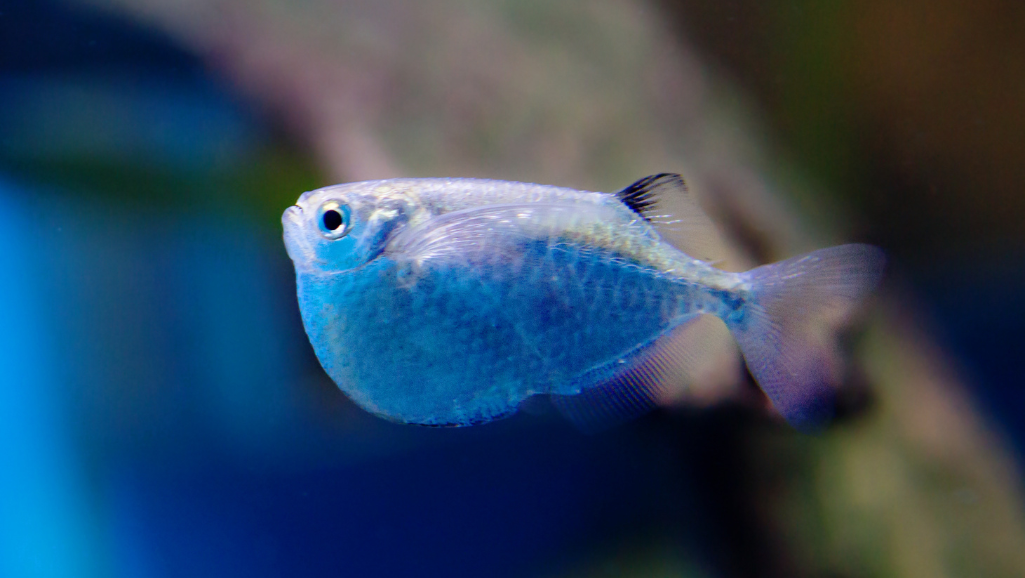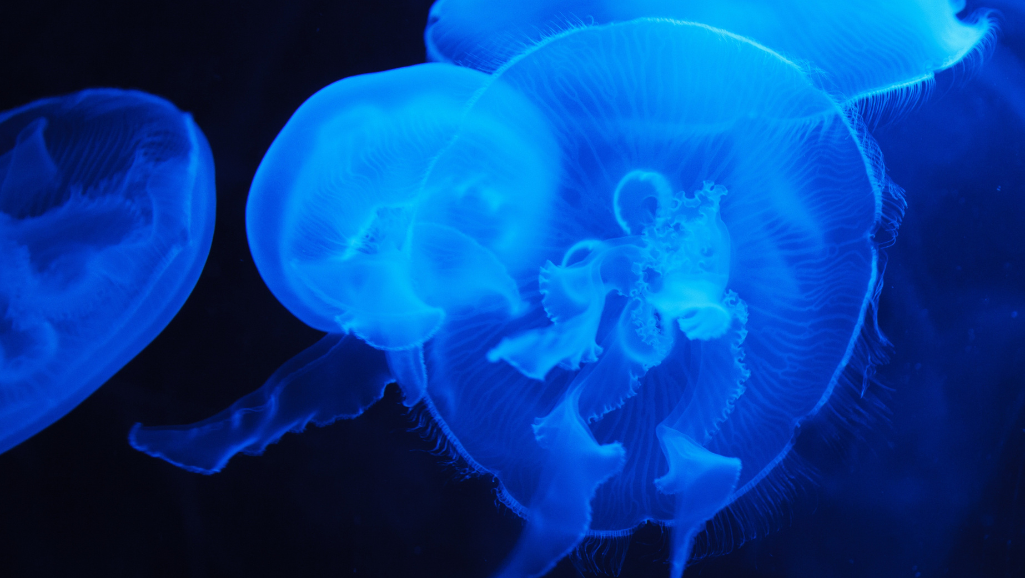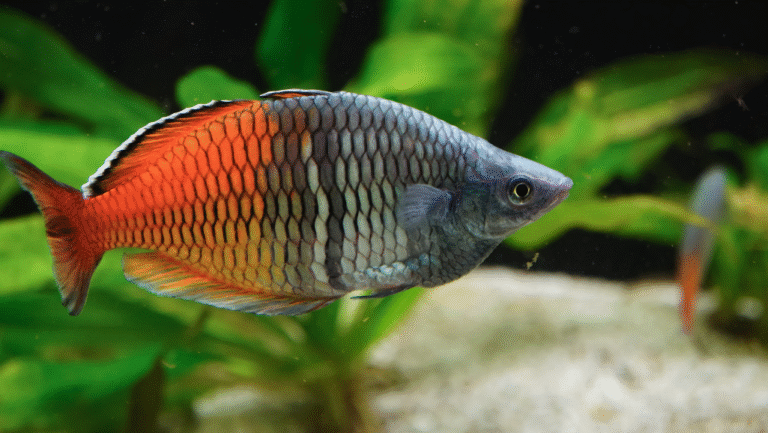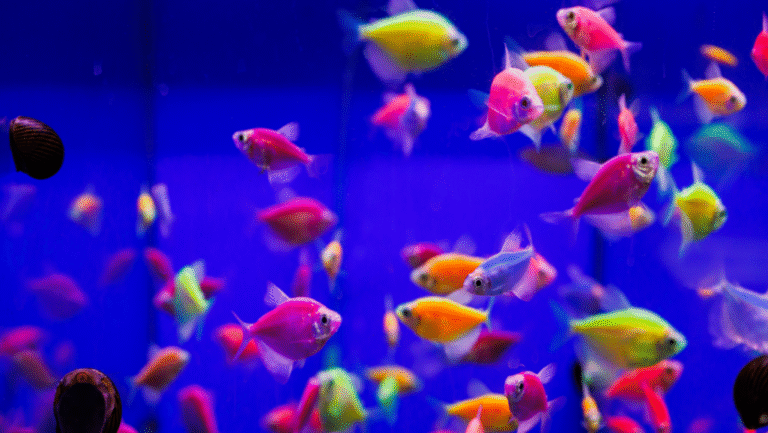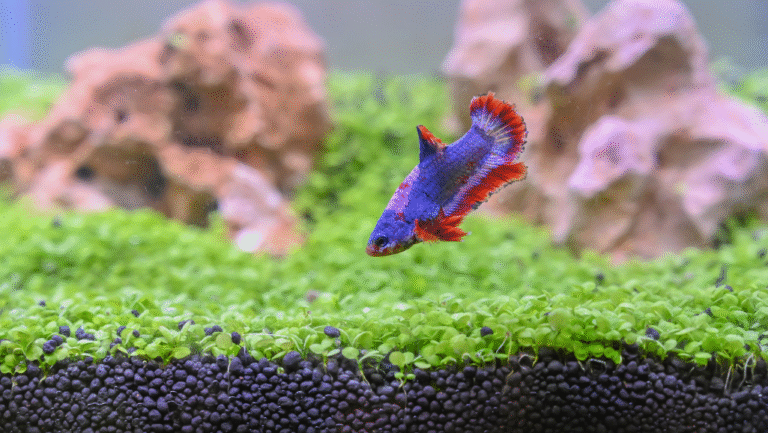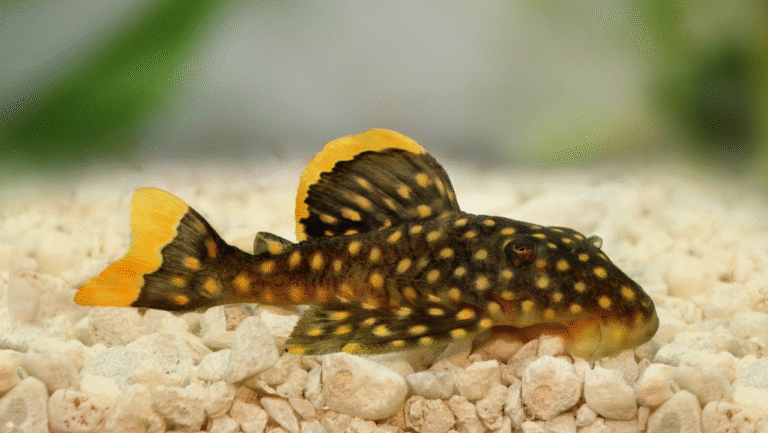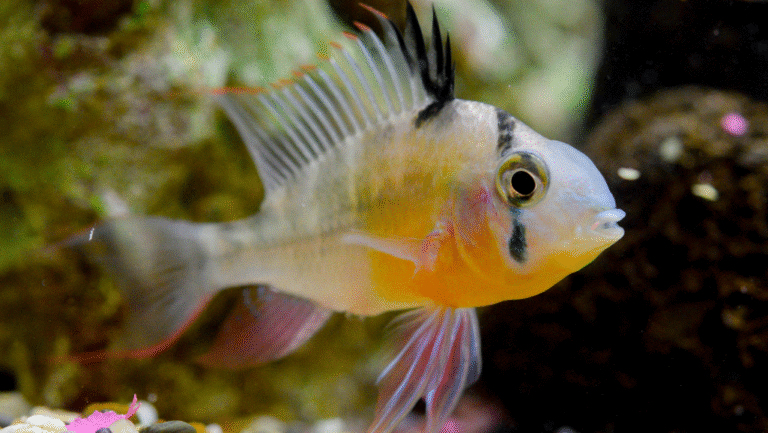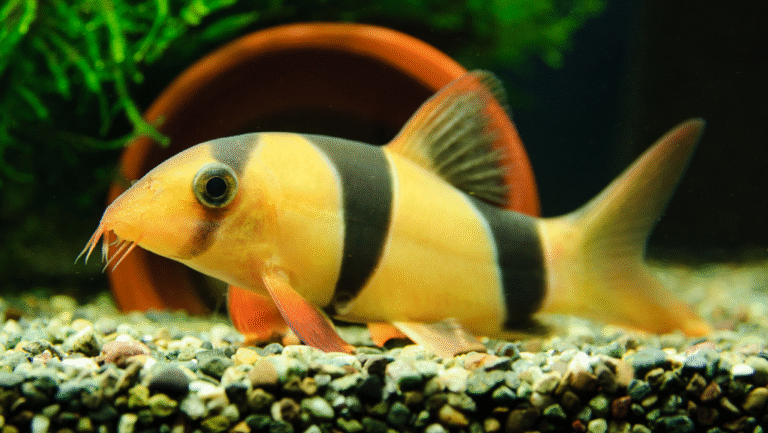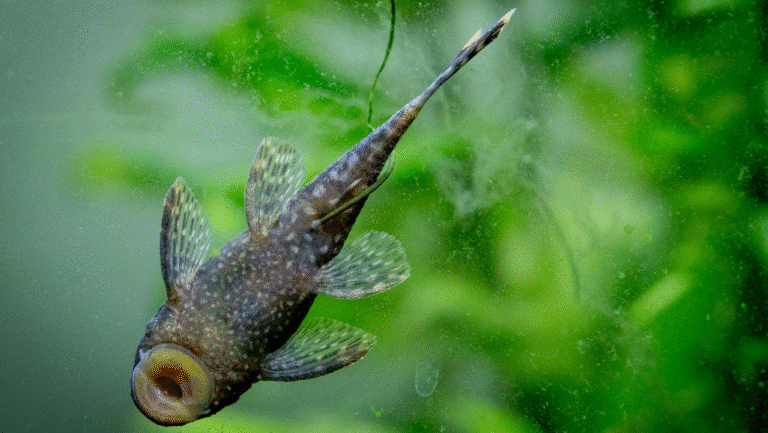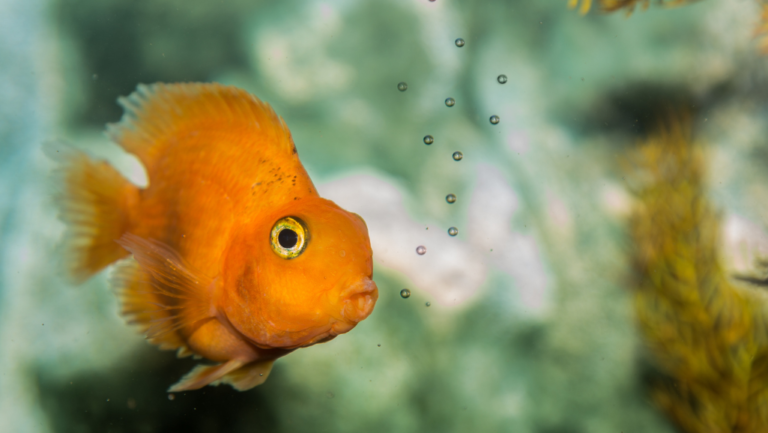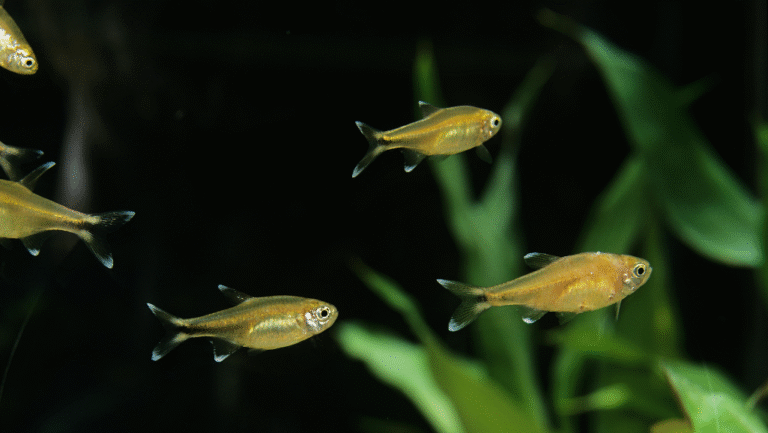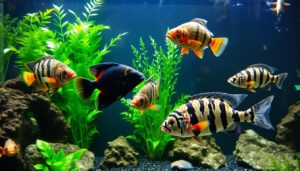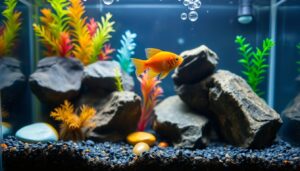Start an enchanting journey with the bioluminescent fish called Hatchetfish. These creatures bring the deep ocean to life, captivating aquarium lovers everywhere. They shine with an otherworldly glow.
The Hatchetfish family includes many species, each with its own mystery. Their bodies glow with a silver-bronze light, bringing the ocean’s secrets to our homes. They create a peaceful yet captivating scene in freshwater tanks.
An Introduction to Hatchetfish: Surface-Dwellers of the Aquarium
Originating from the Amazon Basin, these surface-dwellers are both elegant and calm. Despite their calm demeanor, they have sharp survival skills. Hatchetfish are a symbol of the Amazon’s beauty and its hidden wonders.
Key Takeaways
- Hatchetfish belong to the Gasteropelecidae family, which features nine species across three genera.
- The common hatchetfish can surpass a life span of four years, achieving nearly 3 inches in size.
- Soft water conditions and a warm temperature range are vital for the well-being of common hatchetfish.
- Marbled hatchetfish, the stars of the pet industry, impress with their jumping prowess.
- Carnivorous in nature, hatchetfish require a diet laden with protein to thrive.
- Successful hatchetfish care demands a tank that satiates their preference for ample surface area.
An Introduction to Hatchetfish: Surface-Dwellers of the Aquarium
Hatchetfish are known for their graceful movement at the water’s surface in home aquariums. They are a sight to behold with their unique shape and calm nature. These unique fish species come from the deep sea and add beauty and balance to a community aquarium.
Hatchetfish come from the calm rivers of South America, mainly from the Carnegiella genus. Their body shape, like a hatchet, lets them move quickly just under the surface. Species like Carnegiella myersi and Carnegiella strigata show the wonders of aquatic life.
The Enduring Appeal of Hatchetfish in Home Aquariums
Hatchetfish are loved for their calm nature and how they swim at the surface. They are great for adding movement to the top of any tank. They prefer soft light and lots of floating plants, just like their natural home.
Unique Characteristics That Set Hatchetfish Apart
Hatchetfish have flat bodies and fins that look like wings. These help them move fast and jump up to catch insects from the surface. Watching them hunt is both interesting and helps keep the tank clean.
Why Hatchetfish Are Ideal for Freshwater Community Tanks
Hatchetfish are peaceful and easy to care for, making them perfect for community tanks. They do well with other calm fish like tetras and dwarf gouramis. They like water that’s similar to their home, with a pH of 6.4 to 6.8 and temperatures between 74°F and 83°F.
They also like to be in groups, with at least ten of their kind. This makes for a lively and healthy tank.
Delving Deep: The Natural Habitat of Hatchetfish
The world of hatchetfish in the Amazon tributaries is fascinating. It shows how marine ecology works. These small fish live in diverse, resilient places. Silver hatchetfish, for example, do well in the Amazon Basin’s soft, acidic waters.
In the wild, hatchetfish live in the Amazon’s shadowy waters. They use these calm, diverse areas to hunt and hide from predators. Their ability to glide just under the surface is a survival skill and an evolutionary wonder.
- Silver Hatchetfish Size: They grow to about 2.5 inches, perfect for the dense foliage and narrow creeks of their home.
- Preferred Water Temperature: They thrive in temperatures between 74-83°F, matching the warm waters of tropical South America.
- Feeding Frequency: They eat small meals often, showing how abundant but tiny prey is in the Amazon tributaries.
Aquarists must create conditions similar to their natural habitat to care for hatchetfish. This includes soft, acidic water and lots of plants. Such setups help preserve their marine ecology and let them live as they should. Watching hatchetfish in an aquarium that looks like their home is enlightening.
Studying and conserving hatchetfish helps us understand aquatic life better. It also shows the need for sustainable practices to keep marine ecologies healthy. By learning about hatchetfish habitats, we can better protect these vital water worlds.
Hatchetfish: Masters of Maneuver in the Watery Abyss
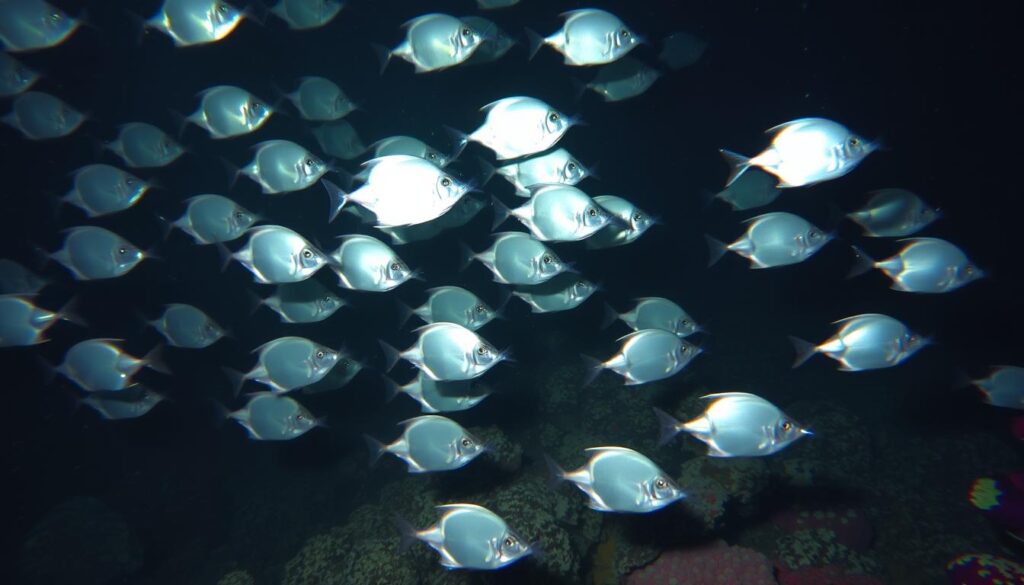
Hatchetfish show us how life works in the deep sea. They catch prey above water, showing how they survive in the deep. Learning about hatchetfish helps us see the amazing ways life has adapted in the ocean.
The hatchetfish’s fins are a result of long evolution. They are perfect for survival in the sea. Their fins, like the backward-sweeping pectoral fins, help them move fast and change direction quickly. This is key for avoiding predators and catching prey.
The Remarkable Fin Structure and Swimming Capabilities
Hatchetfish can move with incredible speed and agility. Their body shape and strong fins let them make sharp turns. This skill is crucial for surviving in the deep sea, where it’s both beautiful and dangerous.
Understanding the Prey and Predation Tactics of Hatchetfish
The dynamics of predation in the deep sea are complex. Hatchetfish play a big role in this. They use their fins to quickly catch insects or small fish. Their ability to be both hunter and hunted shows the intense struggle for survival in the sea.
The Phenomenon of In-Air Prey Capture by Hatchetfish
Hatchetfish are not just good in the water; they can also catch prey in the air. This shows their ability to adapt to different environments. Their skill in catching prey both in and out of the water makes them unique hunters.
Hatchetfish challenge our view of life in the ocean. They show us the complexity of marine life and predator-prey relationships. By studying them, we gain a deeper respect for our ocean’s ecosystems and the need to protect them.
Creating a Hatchetfish Haven: Aquarium Requirements and Care
For those passionate about aquatic conservation, setting up a perfect hatchetfish habitat in community tanks is a rewarding task. It requires meeting specific needs, like water quality and tank size.
- Minimum Tank Size: 20 Gallons
- Water pH: 5.5-7.0 – mimicking the soft water conditions of their natural Amazonian waterways.
- Temperature Range: 75-84 °F – crucial for simulating the tropical warmth they are accustomed to.
Hatchetfish do well in groups. They need their own kind to feel safe and behave naturally:
- Group Size Recommendation: School in groups of at least 6, healthier in groups of 8 or more.
Feeding habits are crucial, as these fish are natural predators:
- Diet: Predominantly flying insects and crustaceans in the wild.
- Food Preferences: Hikari Semi-Floating Micro Pellets are recommended to cater to their surface-feeding nature.
Proper tank mates include Corydoras catfish and smaller tetras, which help replicate the dynamic ecosystem of hatchetfish in community tanks, contributing to their well-being.
Keeping water clean is essential to avoid diseases like Mouth Fungus. Hatchetfish are also prone to stress, so a calm environment is crucial. Learning from others who have successfully raised hatchetfish is very helpful. You can find more information in this hatchetfish care guide.
By following aquatic conservation practices, we not only give these fascinating fish a healthy home. We also help the broader ecosystem.
Beyond the Glass: Hatchetfish in Pop Culture and Education
The hatchetfish is known for its ability to glow in the dark. This amazing feature has made them popular in education and art. They help us learn about ocean ecosystems in a fun way.
Learning about hatchetfish and other glowing fish makes education more interactive. It makes complex ideas about marine life easy to understand. For example, learning about dwarf otocinclus helps us see the whole picture of underwater life.
Hatchetfish Models and Figures: Integrating Marine Life into Learning
Models of hatchetfish and other bioluminescent fish make learning about marine biology fun. They spark curiosity and encourage us to protect these special creatures. They show us how important these fish are in the ocean ecosystems.
Distilling the Essence of Ocean Ecosystems Through Hatchetfish
These educational resources help people of all ages understand the role of hatchetfish in the ocean. They show us the beauty and importance of marine life. This inspires us to care more about the ocean and its creatures.
By using these models, we can also learn about the environment hatchetfish live in. This includes things like Catappa leaves used in aquariums. It helps us see the whole ecosystem.
Conclusion
The journey into the world of hatchetfish is truly captivating. They add to the wonder of marine life. Living deep, they light up the dark ocean with their glow.
These fish show us the beauty of deep-sea exploration. Their glow reminds us of the ocean’s vastness. Hatchetfish help us see the connections in saltwater ecosystems.
Learning about hatchetfish is more than just curiosity. It’s about caring for marine life. Research on them teaches us about their survival. It shows us the vast story of life under the sea.
Hatchetfish symbolize the ocean’s beauty and mystery. They inspire us to explore and protect the sea. As caretakers of the ocean, we must keep studying and safeguarding these species.

